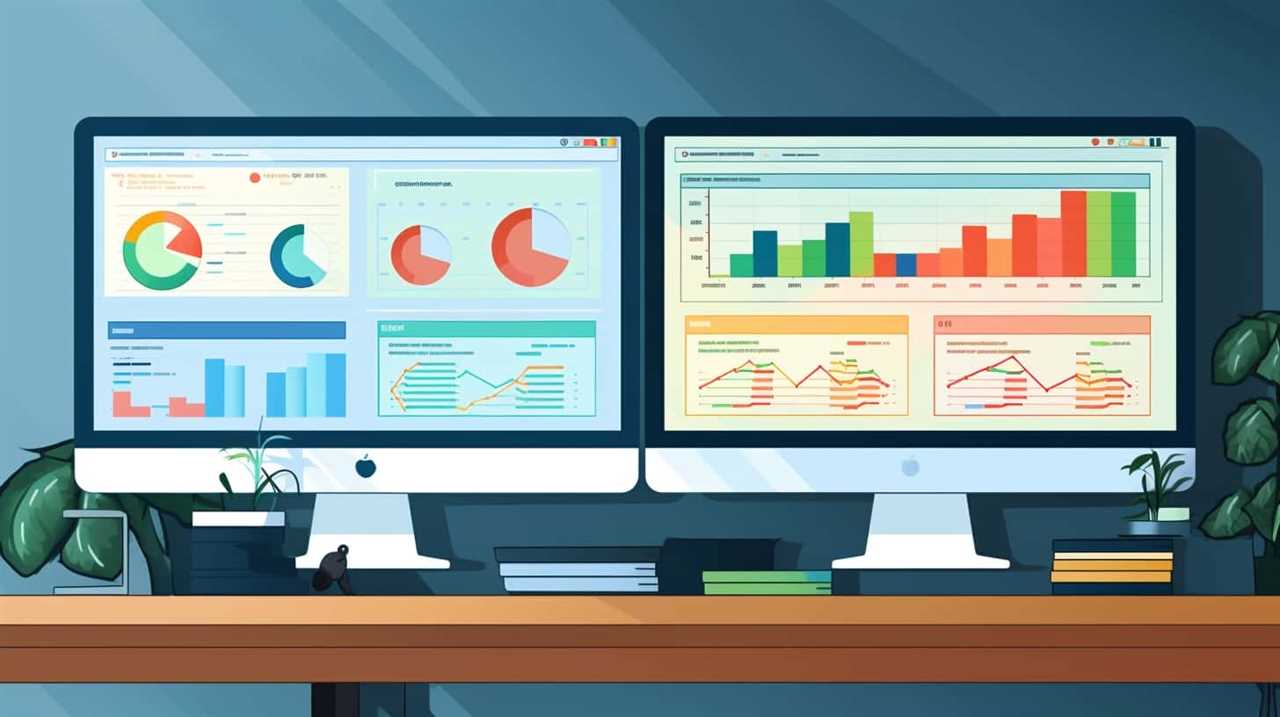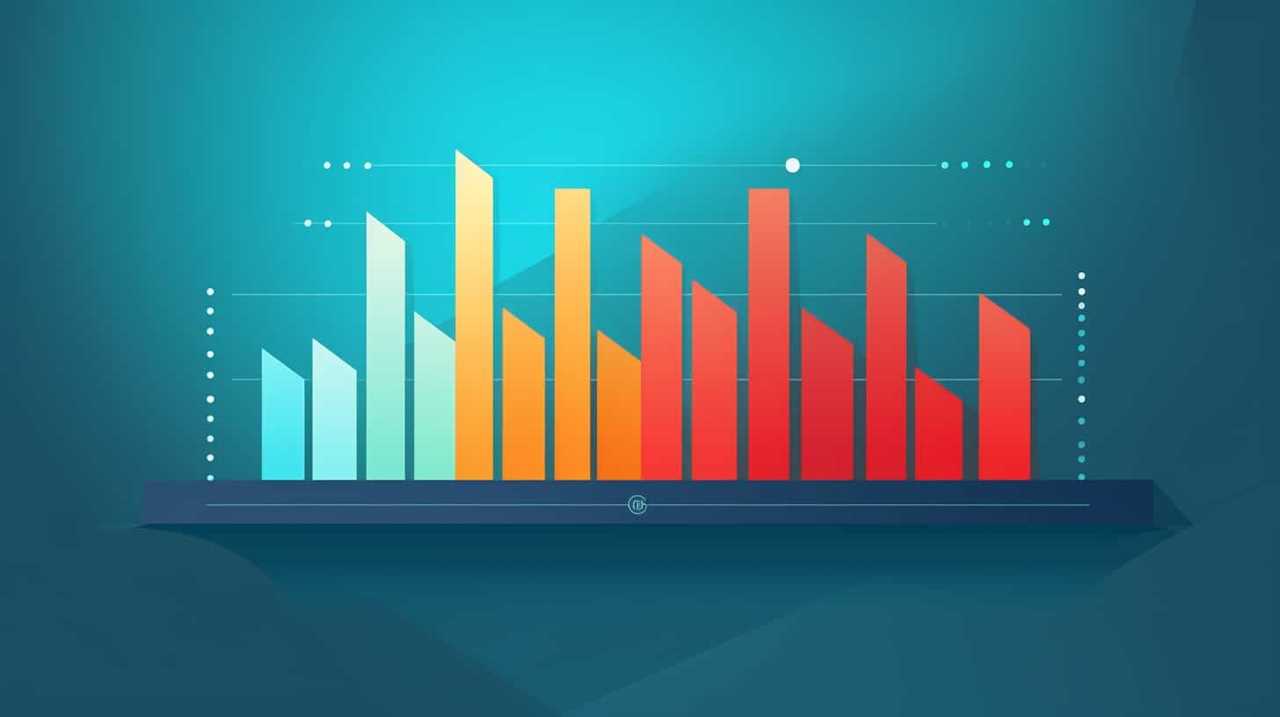Advertising
Google Ads for Handmade Pottery Studios: Shaping an Online Brand

As the proprietor of a pottery studio, I have directly observed the significant impact that Google Ads have in enhancing my digital presence. Utilizing these adverts, my venture has experienced a metamorphosis, helping me to connect with a broader audience and amplifying my online visibility.
With customized ad campaigns and compelling copy, I’ve been able to engage customers and retain their interest through remarketing strategies.
By staying up-to-date with Google Ads best practices, I continue to optimize my advertising efforts and drive success for my handmade pottery studio.
Key Takeaways
- Google Ads can help handmade pottery studios reach a wider audience and showcase their unique creations to potential customers.
- By conducting market research and analyzing data on demographics, interests, and purchasing behaviors, pottery studios can identify target audiences within the pottery community, such as collectors of rare and unique pottery pieces and individuals interested in eco-friendly and sustainable products.
- Creating customized ad campaigns that resonate with the target audience and continuously optimizing them based on data-driven decisions can maximize the effectiveness of Google Ads for pottery studios.
- Leveraging Google Ads can increase online visibility for handmade pottery studios by targeting specific audiences, measuring ad performance, and optimizing campaigns for maximum impact, ultimately shaping the online brand and increasing visibility.
Understanding the Benefits of Google Ads
Using Google Ads has been incredibly beneficial for my handmade pottery studio. It has allowed me to reach a wider audience and showcase my unique creations to potential customers who are genuinely interested in handmade pottery. One of the key benefits of Google Ads is its ad targeting capabilities. With this feature, I can specify the demographics, interests, and behaviors of my target audience, ensuring that my ads are shown to the right people at the right time. This level of precision helps me maximize the effectiveness of my ads and increase the chances of converting clicks into actual sales.

Another advantage of using Google Ads is the ability to measure ad effectiveness. Through the platform’s analytics tools, I can easily track important metrics such as impressions, clicks, and conversions. This data provides valuable insights into the performance of my ads, allowing me to make informed decisions and optimize my campaigns for better results. I can identify which keywords and ad placements are generating the most engagement, enabling me to allocate my budget more effectively and refine my targeting strategy.
Understanding the benefits of Google Ads is just the first step in shaping a successful online brand for my handmade pottery studio. The next section will delve into identifying the specific target audiences that are most likely to appreciate and purchase my unique pottery pieces.
Identifying Target Audiences for Handmade Pottery Studios
To effectively shape my online brand for my handmade pottery studio, I must first identify the target audiences that are most likely to appreciate and purchase my unique pottery pieces. In order to do this, I need to employ effective audience targeting techniques for pottery studios and develop strategies for reaching niche markets in pottery studio advertising.
One effective technique for audience targeting is to conduct market research to gain a deep understanding of the preferences and interests of potential customers. By analyzing data on demographics, interests, and purchasing behaviors, I can identify specific groups of people who are most likely to be interested in handmade pottery.

Another strategy is to focus on reaching niche markets within the pottery community. This involves identifying specific segments of the market that have unique preferences and needs. For example, I could target collectors of rare and unique pottery pieces or individuals who are interested in eco-friendly and sustainable products.
By identifying and targeting these niche markets, I can tailor my advertising messages and campaigns to resonate with their specific interests and desires. This won’t only increase the effectiveness of my marketing efforts but also help establish my handmade pottery studio as a trusted and sought-after brand within these specialized markets.
Transitioning into the next section about creating customized ad campaigns for maximum impact, it’s important to apply these audience targeting techniques and strategies to ensure that my ads reach the right people and generate meaningful results.
Creating Customized Ad Campaigns for Maximum Impact
Now, I will focus on crafting personalized ad campaigns that will have a maximum impact on my target audiences for my handmade pottery studio. Ad targeting and ad campaign optimization are essential for creating successful Google Ads campaigns. By understanding the preferences and behaviors of my target audience, I can tailor my ads to resonate with them and drive maximum engagement.

To create customized ad campaigns, I need to conduct thorough research and analysis. This involves identifying key demographics, interests, and online behaviors of my target audience. By doing so, I can create compelling ads that capture their attention and entice them to click through to my website.
To optimize my ad campaigns, I must constantly monitor and analyze their performance. This includes tracking metrics such as click-through rates, conversion rates, and cost per click. By analyzing these metrics, I can identify which ads are performing well and which ones need improvement. This allows me to make data-driven decisions and make necessary adjustments to maximize the effectiveness of my campaigns.
Here is an example of how I can structure my ad campaigns for maximum impact:
| Ad Campaign | Target Audience | Ad Format | Ad Copy | Landing Page |
|---|---|---|---|---|
| Spring Sale | Home Decor Enthusiasts | Carousel Ads | "Shop our unique pottery collection and save 20% this spring!" | "Discover our beautiful handmade pottery pieces and add a touch of elegance to your home decor." |
| Wedding Gifts | Engaged Couples | Video Ads | "Find the perfect personalized pottery gift for your wedding day!" | "Explore our collection of custom-made pottery gifts that will cherish the memories of your special day." |
| Pottery Classes | Art Enthusiasts | Display Ads | "Unleash your creativity with our pottery classes. Sign up today!" | "Learn the art of pottery making from our experienced instructors and unleash your inner artist." |
Leveraging Google Ads to Increase Online Visibility
When it comes to increasing online visibility, leveraging Google Ads is a powerful tool for handmade pottery studios. By targeting specific audiences, we can ensure that our ads are reaching the right people who are interested in our products.

Additionally, measuring ad performance allows us to make data-driven decisions and optimize our campaigns for maximum impact.
With Google Ads, we can effectively shape our online brand and attract more customers to our pottery studios.
Targeting Specific Audiences
I frequently leverage Google Ads to target specific audiences and increase online visibility for my handmade pottery studio.
One of the first steps in targeting specific audiences is identifying niche markets. By understanding the unique interests and preferences of my potential customers, I’m able to tailor my ads to their specific needs. This allows me to reach a more engaged and receptive audience, increasing the likelihood of conversions.

Additionally, creating captivating ad visuals is crucial in catching the attention of my target audience. Eye-catching images and compelling designs not only grab the viewer’s attention but also communicate the quality and uniqueness of my handmade pottery.
By combining these strategies, I can effectively reach and engage with the specific audiences that are most likely to be interested in my pottery.
Now, let’s explore how measuring ad performance can further optimize my Google Ads strategy.
Measuring Ad Performance
To optimize the effectiveness of my Google Ads strategy, I rely on measuring ad performance to increase online visibility for my handmade pottery studio.

Measuring ad effectiveness and analyzing ad metrics are crucial steps in ensuring that my ads are reaching the right audience and generating the desired results. By monitoring key metrics such as click-through rates, conversion rates, and cost per acquisition, I can assess the performance of my ads and make informed decisions to optimize my campaign.
This data allows me to identify which ads are resonating with my target audience and which ones aren’t performing as well. Armed with these insights, I can refine my ad copy, targeting, and bidding strategies to drive better results and increase my online visibility.
Now, let’s delve into the next section: crafting compelling ad copy to engage customers.
Crafting Compelling Ad Copy to Engage Customers
With Google Ads, I can craft compelling ad copy that engages customers and shapes the online brand for my handmade pottery studio. Effective ad targeting is crucial in grabbing the attention of potential customers. By understanding my target audience and their preferences, I can tailor my ad copy to resonate with them and evoke a sense of curiosity. Using language that appeals to their desires and emotions, I can create a connection that encourages them to click on my ad and explore further.

A/B testing ad copy allows me to experiment with different variations and determine which one performs better. This helps me refine my messaging and optimize my ads for maximum impact. By testing different headlines, descriptions, and calls-to-action, I can identify the most effective combination that drives conversions and leads to increased sales.
When crafting ad copy, it’s important to highlight the unique selling points of my pottery studio. Whether it’s the high-quality craftsmanship, the use of eco-friendly materials, or the personalized designs, I need to communicate the value and benefits that set my studio apart from competitors. By showcasing the passion and expertise behind my creations, I can create a compelling narrative that resonates with customers and encourages them to choose my pottery studio over others.
Crafting compelling ad copy is an ongoing process. By constantly monitoring and analyzing the performance of my ads, I can make data-driven decisions to optimize my messaging and continuously engage customers. With Google Ads, I’ve the tools and insights I need to shape my online brand and attract a loyal customer base for my handmade pottery studio.
Maximizing Conversion Rates Through Effective Landing Pages
When it comes to maximizing conversion rates through effective landing pages, there are several key points to focus on.

First, designing compelling visuals that capture the attention of visitors and convey the unique qualities of your pottery studio.
Second, crafting persuasive copy that highlights the benefits and value of your handmade pottery products.
And finally, optimizing the user experience by creating a seamless and intuitive navigation flow that guides visitors towards making a purchase.
Designing Compelling Visuals
Creating visually captivating landing pages is crucial for maximizing conversion rates in Google Ads campaigns for handmade pottery studios.

When designing these landing pages, it’s important to showcase the uniqueness of the pottery and highlight the craftsmanship involved. Here are three key strategies to consider:
- High-quality images: Use professional photographs that capture the beauty and detail of the pottery. Show different angles and close-ups to give potential customers a clear view of the product.
- Clean and simple layout: Keep the design of the landing page clean and clutter-free. Use white space effectively and ensure that the focus remains on the pottery itself. Avoid distracting elements that may take away from the main product.
- Call-to-action buttons: Place prominent and persuasive call-to-action buttons on the landing page. Use compelling language to encourage visitors to take action, such as ‘Shop Now’ or ‘Discover the Artistry.’
Crafting Persuasive Copy
Continuing from the previous subtopic, I frequently craft persuasive copy to maximize conversion rates through effective landing pages for Google Ads campaigns targeting handmade pottery studios.
Crafting persuasive headlines is essential in capturing the attention of potential customers and compelling them to take action. By using storytelling in ad copy, I create a narrative that engages the audience, making them feel connected to the brand. This approach helps to build trust and establish an emotional connection, which can lead to higher conversion rates.
When crafting copy, it’s important to understand the unique selling points of the pottery studio and convey them in a clear and concise manner. By focusing on the benefits and value that the studio offers, I can create compelling ad copy that resonates with the target audience and motivates them to click through to the landing page.

Optimizing User Experience
To maximize conversion rates through effective landing pages for Google Ads campaigns targeting handmade pottery studios, I focus on optimizing the user experience by creating engaging and user-friendly designs. Here are three key strategies I implement:
- Improving website loading speed: Slow-loading websites can frustrate users and lead to high bounce rates. By optimizing images and minimizing code, I ensure that the landing pages load quickly, providing a seamless experience for visitors.
- Enhancing mobile responsiveness: With the increasing use of mobile devices, it’s crucial to design landing pages that are fully responsive and adapt to different screen sizes. This allows users to easily navigate and interact with the content, regardless of the device they’re using.
- Streamlining the conversion process: By simplifying the steps required for users to take action, such as making a purchase or submitting a form, I remove any unnecessary barriers and make it easier for visitors to convert.
Tracking and Analyzing Performance Metrics for Optimization
Analyzing performance metrics is crucial for optimizing the effectiveness of Google Ads campaigns for handmade pottery studios. By closely monitoring and evaluating the performance data, you can identify what is working well and what needs improvement. This allows you to make data-driven decisions and enhance the overall performance of your ad campaigns.
To effectively track and analyze performance metrics, it is important to focus on key indicators such as click-through rate (CTR), conversion rate, and return on ad spend (ROAS). These metrics provide valuable insights into the performance of your ads and help you understand how well they are resonating with your target audience.
| Performance Metric | Description | Importance |
|---|---|---|
| Click-through rate | The percentage of users who click on your ad out of the total number of impressions it receives. | Indicates the relevancy and appeal of your ad. |
| Conversion rate | The percentage of users who complete a desired action, such as making a purchase or filling a form. | Measures the effectiveness of your ad in driving desired actions. |
| Return on ad spend | The revenue generated for every dollar spent on advertising. | Determines the profitability of your ad campaigns and guides budget allocation decisions. |
By regularly monitoring these metrics and making adjustments based on the insights gained, you can optimize your ad campaigns for better results. This data-driven approach ensures that you are investing your resources wisely and maximizing the impact of your Google Ads.

In the next section, we will explore the importance of implementing remarketing strategies to retain customers and drive repeat business.
Implementing Remarketing Strategies to Retain Customers
When it comes to retaining customers, implementing remarketing strategies is essential.
By targeting website visitors who’ve already shown interest in your handmade pottery, you can create customized ad campaigns that remind them of your brand and encourage them to make a purchase.
Remarketing allows you to stay top-of-mind and build a lasting relationship with your audience, increasing the likelihood of repeat business.

Targeting Website Visitors
After analyzing the data, I’ve found a successful method for retaining customers is by targeting website visitors through implementing remarketing strategies. By utilizing conversion tracking and A/B testing techniques, you can effectively engage with your website visitors and encourage them to return.
Here are three key strategies to consider:
- Dynamic Remarketing: Show personalized ads to visitors based on the specific products or services they viewed on your website. This tailored approach increases the chances of conversions by reminding potential customers of their previous interest.
- Custom Audience Segmentation: Divide your website visitors into different segments based on their behavior, such as the pages they visited or the actions they took. This allows you to create highly targeted ads that resonate with each segment, increasing the likelihood of conversion.
- Exclusive Offers: Offer special discounts or promotions exclusively to your website visitors. This not only incentivizes them to make a purchase but also creates a sense of exclusivity and loyalty towards your brand.
Customized Ad Campaigns
To effectively retain customers and encourage repeat purchases, I implement customized ad campaigns using Google Ads’ remarketing strategies. Customized ad targeting allows me to reach out to customers who’ve already shown interest in my pottery products. By using data from their previous interactions with my website, I can tailor my ads specifically to their preferences and needs. This personalized approach increases the chances of converting them into repeat customers.
To optimize my ads, I continually analyze the performance of different ad variations and make adjustments based on the results. This includes testing different headlines, images, and calls to action to find the most effective combination. By constantly refining and optimizing my ad campaigns, I can ensure that my pottery studio stays top of mind for potential customers.

Now, let’s move on to the next section, where I’ll discuss budgeting and bidding strategies for cost-effective advertising.
Budgeting and Bidding Strategies for Cost-Effective Advertising
In my experience, I’ve found that by carefully budgeting and strategically bidding, handmade pottery studios can achieve cost-effective advertising with Google Ads. Here are three budgeting and bidding strategies that can help optimize ad spend and maximize results for local targeting:
- Set a realistic budget: Start by determining how much you’re willing to spend on advertising each month. Consider factors such as your overall marketing budget, the size of your target audience, and the competitiveness of your industry. Setting a realistic budget will ensure that you allocate enough resources to generate meaningful results without overspending.
- Use location targeting: Google Ads allows you to target your ads to specific geographic locations. For handmade pottery studios, it’s important to focus on local targeting to reach potential customers who are likely to be interested in your products. By narrowing your audience to a specific area, you can optimize your ad spend and increase the chances of attracting local customers.
- Monitor and adjust your bids: Constantly monitor the performance of your ads and adjust your bids accordingly. If certain keywords or locations are generating a high return on investment, consider increasing your bids to gain more visibility in those areas. On the other hand, if certain keywords or locations aren’t performing well, you may want to lower your bids or reallocate your budget to more effective areas.
Incorporating Visuals and Videos in Google Ads for Pottery Studios
When it comes to showcasing the beauty and craftsmanship of handmade pottery studios, incorporating visuals and videos in Google Ads is essential. Visual storytelling is a powerful tool that allows businesses to engage with their audience on a deeper level, evoking emotions and creating a memorable brand experience. As a pottery studio, it is crucial to utilize this form of creative branding to stand out in a crowded online marketplace.
Incorporating visuals and videos in Google Ads can help bring your pottery studio to life and capture the attention of potential customers. By showcasing stunning photographs of your pottery pieces or videos of the creation process, you can highlight the unique aspects of your craftsmanship and attract customers who appreciate the artistry involved.

To make the most impact, it is important to carefully curate your visuals and videos to align with your brand identity and values. Consider using a three-column and three-row table to organize and display the different elements you can incorporate into your Google Ads:
| Visuals | Videos | Benefits |
|---|---|---|
| High-quality images | Pottery-making process | Showcasing craftsmanship |
| Close-up shots | Studio tour | Creating a personal connection |
| Lifestyle shots | Customer testimonials | Building trust and credibility |
Staying Up-To-Date With Google Ads Best Practices and Updates
As a pottery studio owner, staying up-to-date with the latest Google Ads best practices and updates is crucial for maintaining a successful online brand presence. The Google Ads algorithm is constantly evolving, so it’s important to keep track of the changes to ensure that your ads are effective and reaching the right audience.
Here are three key reasons why staying updated is essential:
- Google Ads algorithm changes: Google frequently updates its algorithm to improve the user experience and deliver more relevant ads. By staying informed about these changes, you can optimize your ad campaigns to align with the latest requirements and guidelines. This will help you maintain a high-quality ad score and improve your ad rankings.
- Keeping up with industry trends: The digital advertising landscape is ever-changing, and it’s important to stay ahead of the curve. By staying updated with industry trends, you can incorporate new strategies and techniques into your Google Ads campaigns, ensuring that you stay competitive and relevant in the market.
- Monitoring competitor strategies: Your competitors are constantly trying new tactics to attract customers. By staying updated with their strategies, you can identify gaps in the market and find opportunities to differentiate your pottery studio. Analyzing competitor ads and keywords can help you refine your own campaigns and stay one step ahead.
Frequently Asked Questions
How Much Does It Cost to Advertise on Google Ads for a Handmade Pottery Studio?
Advertising on Google Ads for a handmade pottery studio can vary in cost depending on factors like keywords and targeting. To get an accurate cost breakdown and effectiveness analysis, it’s best to consult with a Google Ads expert.

Are There Any Specific Keywords That Work Well for Handmade Pottery Studios in Google Ads?
To target pottery enthusiasts effectively in Google Ads, it’s essential to use specific keywords. By optimizing ad copy and landing pages, handmade pottery studios can create a compelling online brand that captures the attention of potential customers.
How Long Does It Take to See Results From a Google Ads Campaign for a Pottery Studio?
When it comes to seeing results from a Google Ads campaign for a pottery studio, it’s important to optimize your ads and measure success using tips and strategies. But how long does it take?
Can Google Ads Help Increase Sales for a Handmade Pottery Studio’s Online Store?
Yes, Google Ads can greatly increase sales for a handmade pottery studio’s online store. With effective targeting strategies and proper measurement of campaign success, Google Ads can drive more traffic and conversions, boosting revenue.
Are There Any Restrictions on the Type of Visuals or Videos That Can Be Used in Google Ads for Pottery Studios?
There are no restrictions on the type of visuals or videos that can be used in Google Ads for pottery studios. Unique advertising strategies and creating engaging visual content are essential for shaping an online brand.

Conclusion
As I reflect on the power of Google Ads for handmade pottery studios, I’m reminded of the delicate art of molding clay. Just as skilled potters shape their creations with precision and intention, Google Ads allow us to sculpt our online brand and reach our target audience with maximum impact.
By leveraging the benefits of customized ad campaigns, compelling ad copy, and visual elements, we can increase our online visibility and retain customers through remarketing strategies.
Let’s embrace the ever-evolving world of Google Ads and continue shaping our success.
Advertising
How Do I Pass an Seo Interview

The famous quote ‘knowledge is power’ is widely recognized. This rings especially true when it comes to excelling in an SEO interview.
We know you’re eager to liberate yourself from the anxiety of job hunting and impress potential employers with your SEO expertise. That’s why we’re here to share essential concepts, effective strategies, and expert tips to help you nail that interview and secure your dream SEO job.
Let’s dive in and unleash your SEO potential!
Key Takeaways
- Understanding SEO best practices, core components, and the importance of SEO tools and analytics
- Advanced keyword analysis, understanding keyword intent, and targeting high-potential keywords
- Content creation, conducting SEO audits, and optimizing factors like page load speed and mobile-friendliness
- Mastering technical SEO by focusing on website architecture, site visibility, and mobile optimization
Essential SEO Concepts
In this section, we’ll explore the fundamental principles and core components of SEO. Understanding SEO best practices is essential for achieving success in digital marketing.

SEO tools and analytics play a crucial role in optimizing our website’s performance and improving our online visibility. By utilizing these tools, we can analyze important data such as keyword rankings, website traffic, and user behavior. This valuable information allows us to make data-driven decisions and continuously improve our SEO strategies.
Implementing SEO best practices and leveraging SEO tools and analytics is key to staying ahead in the competitive online landscape.
Now that we’ve covered the essential concepts of SEO, let’s dive into the next section, which will focus on effective keyword research strategies.
Effective Keyword Research Strategies
Now let’s explore effective keyword research strategies to further enhance our SEO efforts and drive targeted organic traffic to our website.

One of the key strategies is advanced keyword analysis. This involves going beyond basic keyword research and delving deeper into understanding the intent behind the keywords. By analyzing search volume, competition, and relevance, we can identify high-potential keywords that will bring in the most relevant traffic.
Additionally, long tail keyword targeting is another powerful strategy. Long tail keywords are longer and more specific phrases that have less competition and higher conversion rates. By targeting these niche keywords, we can attract highly qualified visitors who are more likely to convert into customers.
On-Page Optimization Techniques
To continue our discussion on effective SEO strategies, let’s dive into the realm of on-page optimization techniques.
On-page optimization plays a crucial role in improving a website’s visibility and ranking in search engine results pages (SERPs). One key aspect of on-page optimization is content creation. By creating high-quality, relevant, and engaging content, you can attract more organic traffic and keep visitors on your site longer.

Additionally, conducting an SEO audit is essential to identify areas for improvement on your website. This includes analyzing factors such as page load speed, mobile-friendliness, URL structure, and metadata.
Mastering Technical SEO
Continuing our exploration of effective SEO strategies, let’s delve into the realm of mastering technical SEO with a focus on optimizing website performance and structure.
A well-designed website architecture is crucial for search engines to understand and crawl your site effectively. It involves organizing your website’s pages, URLs, and navigation in a logical and user-friendly manner. This can improve your site’s visibility and accessibility, ultimately boosting its search rankings.
Additionally, mobile optimization is essential in today’s digital landscape, as more and more users access the internet through their smartphones. Ensuring that your website is responsive and mobile-friendly won’t only enhance the user experience but also align with search engines’ preferences, leading to higher rankings.

Nailing SEO Interview Questions
Let’s tackle SEO interview questions head-on to ensure we nail them with confidence and expertise.
When preparing for an SEO interview, it’s important to have a solid understanding of the industry and its best practices. One of the most common SEO interview mistakes isn’t being well-prepared. To avoid this, you should familiarize yourself with the latest SEO trends, algorithms, and tools.
Additionally, it’s crucial to have a clear understanding of the core concepts of SEO, such as keyword research, on-page optimization, and link building.
To further enhance your chances of success, practice answering common SEO interview questions and have specific examples ready to demonstrate your skills and knowledge.

Frequently Asked Questions
What Are Some Common Challenges Faced in Implementing SEO Strategies and How Can They Be Overcome?
Implementing SEO strategies can be challenging due to technical issues and competition. However, we can overcome these obstacles by conducting thorough competitor analysis and addressing any technical issues promptly.
How Can Social Media Platforms Be Integrated Into an SEO Strategy?
Social media platforms can be integrated into an SEO strategy by leveraging social media engagement to drive traffic and improve search engine rankings. Content marketing strategies can be used to create and promote valuable content on social media platforms, boosting visibility and engagement.
What Are Some Effective Ways to Measure the Success of an SEO Campaign?
To measure the success of an SEO campaign, we track key performance indicators such as organic traffic, keyword rankings, and conversion rates. These metrics give us valuable insights into the effectiveness of our strategies.
Can You Provide Some Tips for Optimizing Websites for Voice Search?
When optimizing websites for voice search, key considerations include understanding natural language, using long-tail keywords, and optimizing for featured snippets. Voice search optimization strategies involve creating conversational content and improving site speed for a seamless user experience.

How Important Is Link Building in SEO and What Are Some Best Practices for Building High-Quality Backlinks?
Link building is a crucial aspect of SEO. It helps improve our website’s visibility and rankings. Anchor text plays a significant role in link building, and acquiring natural backlinks through quality content and outreach strategies is essential.
Conclusion
In conclusion, mastering the art of SEO is like navigating a vast ocean of information. By understanding essential concepts, conducting effective keyword research, implementing on-page optimization techniques, and mastering technical SEO, you can set sail toward success.
Just like a skilled sailor, your ability to navigate this ever-changing landscape will determine your success in an SEO interview. So, prepare yourself, equip your knowledge, and confidently set sail into the world of SEO.
Advertising
How Do I Get Free Seo Keywords

Are you tired of spending a significant amount of money on SEO keywords? Your search ends here! Discover the methods to acquire SEO keywords without any cost.
In this article, we’ll share the secrets to finding valuable keywords without breaking the bank. By utilizing tools like Google’s Keyword Planner and analyzing competitor keywords, you can optimize your website for search engines without spending a dime.
Get ready to unlock the power of free SEO keywords and set your website free!
Key Takeaways
- Importance of conducting keyword research and utilizing keyword research tools for website optimization
- Benefits of using long-tail keywords for free SEO optimization, including attracting a more relevant audience and improving search engine rankings
- The value of leveraging user-generated content for keyword research, such as maximizing social media engagement and analyzing customer reviews for keyword insights
- The strategic advantage of analyzing competitor keywords and incorporating competitor keyword insights into our SEO strategy, including using tools for competitive analysis and analyzing keyword gaps.
Understanding the Importance of SEO Keywords
Understanding the importance of SEO keywords involves identifying the most relevant and effective terms for optimizing website visibility and attracting organic traffic.

One crucial aspect of SEO optimization is understanding keyword density. Keyword density refers to the percentage of times a specific keyword appears on a web page compared to the total number of words. It’s essential to strike the right balance between using keywords enough to boost search engine rankings, but not so much that it appears unnatural or spammy.
Another factor that plays a significant role in boosting SEO rankings is the use of meta tags. Meta tags are snippets of HTML code that provide information about a web page’s content to search engines. They include title tags, meta descriptions, and meta keywords.
By optimizing these meta tags with relevant keywords, you can improve your website’s visibility and attract more organic traffic.
Understanding keyword density and utilizing meta tags effectively are key elements in achieving successful SEO optimization.

Utilizing Google’s Keyword Planner Tool
To further optimize website visibility and attract organic traffic, we can utilize Google’s Keyword Planner Tool. This tool is a powerful resource that enables us to conduct keyword research and find relevant keywords for our website.
By identifying the right keywords, we can improve our website’s ranking on search engine results pages and attract more visitors.
In addition to Google’s Keyword Planner Tool, there are other alternative keyword research tools available that can provide valuable insights. These tools can help us find keywords that might be overlooked by competitors, giving us a competitive edge.
Once we’ve identified our target keywords, it’s important to maximize keyword density in our website content. This means incorporating the keywords naturally and strategically throughout our website to increase its visibility and relevance to search engines.

Exploring Long-Tail Keywords for Free SEO Optimization
After utilizing Google’s Keyword Planner Tool, we can now delve into exploring long-tail keywords for free SEO optimization. Long-tail keywords are longer and more specific keyword phrases that are often less competitive but highly targeted. They can help you attract a more relevant audience and improve your search engine rankings.
When conducting keyword research, it’s important to consider the intent of your target audience. By understanding their needs and preferences, you can identify long-tail keywords that align with their search queries. Here’s a table highlighting some keyword research techniques and long-tail keyword strategies:
| Keyword Research Techniques | Long-Tail Keyword Strategies |
|---|---|
| Analyzing competitor keywords | Using question-based keywords |
| Exploring related searches | Incorporating location-specific keywords |
| Conducting customer surveys | Targeting niche-specific keywords |
Leveraging User-Generated Content for Keyword Research
We can further enhance our keyword research by leveraging user-generated content. One effective way to do this is by maximizing social media engagement for keyword discovery.
By actively engaging with our audience on social media platforms, we can gather valuable insights into the words and phrases they use when discussing our products or services.

Additionally, harnessing the power of customer reviews can provide us with valuable keyword insights. By analyzing the language used in these reviews, we can identify recurring keywords that are relevant to our business.
This user-generated content can give us a deeper understanding of how our target audience thinks and speaks about our offerings. By incorporating these insights into our keyword research, we can optimize our SEO strategy to better meet our audience’s needs.
Now, let’s dive into the next section about analyzing competitor keywords for free SEO insights.
Analyzing Competitor Keywords for Free SEO Insights
Continuing our exploration of keyword research, let’s now delve into the world of analyzing competitor keywords to gain valuable SEO insights. When it comes to optimizing our website for search engines, understanding what keywords our competitors are ranking for can provide us with a strategic advantage.

Here are four steps to help us analyze competitor keywords effectively:
- Identify top ranking competitor keywords: Start by identifying our main competitors in the industry and then analyze their websites to identify the keywords they’re ranking for.
- Use SEO keyword research tools for competitive analysis: Utilize tools like SEMrush or Ahrefs to gather data on our competitors’ keyword rankings, search volume, and competition level.
- Analyze keyword gaps: Compare our own keyword rankings to those of our competitors to identify any keyword gaps we can take advantage of.
- Study competitor content: Analyze our competitors’ content to understand how they’re using keywords effectively and incorporate those strategies into our own content.
Frequently Asked Questions
What Are Some Common Mistakes to Avoid When Conducting Keyword Research for SEO Optimization?
When conducting keyword research for SEO optimization, it’s important to avoid common mistakes. By using effective long tail keyword identification techniques, we can ensure accurate and targeted results that will boost our website’s visibility.
How Can I Identify the Most Effective Long-Tail Keywords for My Website?
To identify the most effective long-tail keywords for your website, consider best practices for using long tail keywords in content marketing. Additionally, track the performance of long tail keywords in SEO campaigns to optimize your strategy.
Are There Any Alternative Keyword Research Tools Besides Google’s Keyword Planner?
There are alternative keyword research tools besides Google’s Keyword Planner. We can explore the best practices for using them and optimize SEO keywords for voice search. Let’s liberate our SEO strategies!

How Can I Optimize User-Generated Content to Target Specific SEO Keywords?
To optimize user-generated content for targeting specific SEO keywords, we can follow a few steps. First, research and identify the keywords relevant to your content. Then, incorporate these keywords naturally into the user-generated content to enhance its SEO performance.
What Are Some Strategies for Staying Updated on Competitor Keywords in Order to Gain an Edge in Seo?
To gain an edge in SEO, we stay updated on competitor keywords through thorough competitor analysis. This allows us to develop an effective SEO strategy that liberates us from relying solely on free SEO keywords.
Conclusion
In the vast world of SEO, finding free keywords can feel like searching for buried treasure. But fear not! By understanding the importance of keywords, utilizing tools like Google’s Keyword Planner, exploring long-tail keywords, leveraging user-generated content, and analyzing competitor keywords, you can unlock the hidden gems that will boost your website’s visibility.
So, put on your SEO detective hat and start uncovering those valuable keywords, turning your website into a shining star in the vast online universe.

Happy hunting!
Advertising
How Can I Practice Seo for Free

Are you tired of shelling out a lot of money on SEO tools and services? Well, we have some exciting news for you! In this article, we will share our tips on how to implement SEO without spending a dime.
Yes, you heard that right – free! Get ready to unlock the secrets of keyword research, on-page optimization, content creation, building high-quality backlinks, and monitoring SEO performance.
Say goodbye to expensive tools and hello to liberation! Let’s dive in and revolutionize your SEO game, together.
Key Takeaways
- Conduct thorough keyword research using free keyword research tools to identify popular and relevant topics.
- Incorporate relevant keywords naturally throughout the content to optimize website visibility in search results.
- Implement on-page optimization techniques such as optimizing meta tags, page titles, and on-page elements like headings and keyword usage.
- Build high-quality backlinks through guest posting on niche websites and sharing website content on social bookmarking sites to increase visibility and improve search engine rankings.
Keyword Research
When practicing SEO for free, we begin by conducting keyword research to identify the most relevant and valuable terms to target for website optimization. Competitor analysis plays a vital role in this process. By analyzing our competitors’ websites, we can gain insights into the keywords they’re targeting and identify potential gaps or opportunities.

Additionally, we focus on long tail keywords, which are more specific and have lower competition. These keywords allow us to attract highly targeted traffic and increase our chances of ranking higher in search engine results.
By incorporating competitor analysis and long tail keywords into our keyword research strategy, we can optimize our website effectively and attract the right audience.
With this foundation in place, we can now move on to the next step: on-page optimization.
On-Page Optimization
To optimize our website for search engines without spending any money, we focus on improving our on-page elements. This includes optimizing our meta tags and page titles. Meta tags provide information about the content of a webpage to search engines, while page titles help search engines understand the topic of the page. By using relevant keywords in our meta tags and page titles, we can improve our website’s visibility in search results.

Another important aspect of on-page optimization is image optimization. This involves optimizing the images on our website to make them more search engine-friendly. We can achieve this by using descriptive filenames, alt tags, and optimizing the image size and format. By implementing these image optimization techniques, we can enhance our website’s overall SEO performance and attract more organic traffic.
Content Creation and Optimization
For content creation and optimization, we prioritize the creation and optimization of high-quality and relevant content on our website. This is essential for effective content promotion and to ensure that our website ranks well in search engine results.
To achieve this, we follow a few key strategies:
- Conducting thorough keyword research to identify popular and relevant topics to write about.
- Creating compelling, informative, and engaging content that appeals to our target audience.
- Incorporating relevant keywords naturally throughout the content to improve its visibility to search engines.
- Using SEO friendly website design techniques, such as optimizing page load speed and ensuring mobile responsiveness.
- Implementing proper on-page optimization techniques, such as meta tags and header tags, to enhance the visibility of our content.
Building High-Quality Backlinks
As we delve into the topic of practicing SEO for free, one crucial aspect to explore is the process of building high-quality backlinks. Backlinks are links from other websites to your own, and they play a significant role in improving your website’s search engine ranking.

One effective way to build high-quality backlinks is through guest posting. By writing valuable content for other websites in your niche, you can include a link back to your own site. This not only helps you gain exposure to a new audience but also establishes your website as a reliable source of information.
Another method is through social bookmarking, where you share your website’s content on social bookmarking sites. This helps increase visibility and attract more visitors to your site.
Moving forward, let’s now explore the next step in practicing SEO for free – monitoring and analyzing SEO performance.
Monitoring and Analyzing SEO Performance
Now, let’s delve into how we can effectively monitor and analyze the performance of our SEO efforts. To ensure that our SEO strategies are yielding the desired results, it’s crucial to regularly monitor and analyze our performance.

Here are some key steps to help us in this process:
- Implement competitor analysis: By studying our competitors’ SEO strategies, we can identify areas for improvement and stay ahead in the game.
- Utilize local SEO strategies: Targeting local keywords and optimizing our website for local search can help us attract relevant and high-quality traffic.
- Track keyword rankings: Monitoring our keyword rankings allows us to evaluate the effectiveness of our SEO efforts and make necessary adjustments.
- Analyze website traffic: By analyzing website traffic, we can identify which sources are driving the most visitors to our site and optimize accordingly.
- Monitor conversion rates: Tracking conversion rates helps us measure the success of our SEO campaigns in terms of generating leads or sales.
Frequently Asked Questions
What Are Some Common Mistakes to Avoid When Conducting Keyword Research?
When conducting keyword research, we need to be aware of common mistakes. By understanding these mistakes, we can avoid them and improve the effectiveness of our SEO strategies.
Are There Any Specific Strategies or Techniques to Optimize Images for On-Page Seo?
When it comes to optimizing images for on-page SEO, we have found that compressing images without losing quality and using descriptive alt tags are two effective techniques. These best practices can greatly improve your website’s SEO.
How Can I Ensure That My Content Is Engaging and Relevant to Both Search Engines and Users?
Creating captivating meta descriptions and improving user experience are key to ensuring that our content is engaging and relevant to both search engines and users. It’s essential for better SEO rankings.

What Are Some Effective Ways to Acquire High-Quality Backlinks Organically?
To acquire high-quality backlinks organically, we recommend guest blogging and influencer collaborations. These strategies allow us to build relationships and gain valuable exposure, boosting our website’s credibility and visibility in search engines.
Is There a Recommended Frequency for Monitoring and Analyzing SEO Performance?
There is a recommended frequency for reporting and analyzing SEO performance. Regular analysis allows us to stay on top of our SEO efforts, identify areas for improvement, and make data-driven decisions.
Conclusion
In conclusion, practicing SEO for free isn’t only possible but also crucial for improving website visibility and driving organic traffic.
By focusing on keyword research, optimizing on-page elements, creating high-quality content, and building strong backlinks, you can greatly enhance your SEO performance.

So, don’t miss out on this golden opportunity to skyrocket your website’s rankings and dominate the search engine results.
Start implementing these strategies today, and watch your online presence soar like a rocket in the digital universe!
-

 Holistic SEO1 month ago
Holistic SEO1 month agoHolistic Local SEO Tactics for Small Businesses
-

 Holistic SEO4 weeks ago
Holistic SEO4 weeks agoHow to Establish Dominance in SEO through Topical Authority
-

 Learning Center1 month ago
Learning Center1 month ago52 Niches with Good Crossover Potential Explored
-

 Holistic SEO1 month ago
Holistic SEO1 month agoHolistic SEO Food Blogger
-

 Holistic SEO1 month ago
Holistic SEO1 month agoKeyword Research (SEO) for Tattoo Artists
-

 Learning Center3 weeks ago
Learning Center3 weeks agoThe Future of SEO: Leveraging the Google Search Generative Experience
-

 Keyword Research4 weeks ago
Keyword Research4 weeks agoMastering SEO: How to Analyze Keyword Results and Find Easy Keywords
-

 Keyword Research2 months ago
Keyword Research2 months agoHow to Keyword Search in Excel



















